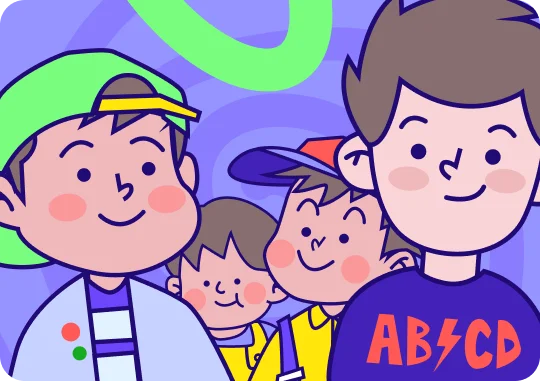

Teaching English to preschoolers
Parents choose English for kids mainly as a developing class to improve memory, attention and imagination.
TRY FOR FREE

Parents choose English for kids mainly as a developing class to improve memory, attention and imagination.
TRY FOR FREE
No matter what the teacher's goal is – memorising new words or learning grammar – it is presented to the child in game form. A child should perceive English as something that a game is impossible without. Classes should be based on a game format, where a student gets precious stars for listening carefully and following the teacher’s instructions.

A teacher for a child is much more than just a source of knowledge. A teacher sets the rules of the game, and a child will either accept them or not.
Whether a student will like English or not depends on the teacher. For children who are just starting to learn English, the first lesson can be crucial, and the teacher must leave positive impressions in the child's memory.
The game format and a teacher that the child is willing to play with are the two determinants in English classes for preschoolers and kids. What about the process itself?
Our body has its memory, and children's bodies do too. Everything that children cannot express in words is conveyed instead by their facial expressions and gestures; they often jump up, wave their arms, turn their head, trying to tell adults what they need.
The same thing happens when preschool children learn English. Learning rhymes, numbers and songs with young students, with the teacher using body language, develops children in the following ways:





Children need colourful visual aids with bright colours and beautiful pictures that they can touch. Our teachers use toys during the classes. Teachers talk to them, make jokes and use them to show young students what they mean. Active interaction is the fourth factor of a successful lesson with children.
Children often take their favourite toys with them to classes. Teachers use them in the game, engaging the child in the learning process. This approach works with timid children.

During active interaction, all factors are combined into a whole – teaching kids English. In an effective lesson with preschoolers, a child has three types of activity: physical (active games, dancing), speaking, creative. The following things are crucial when teaching English to preschoolers and kids:
Our teachers will get along with your child, test their current level of English and inspire them to learn the language!
TRY FOR FREE